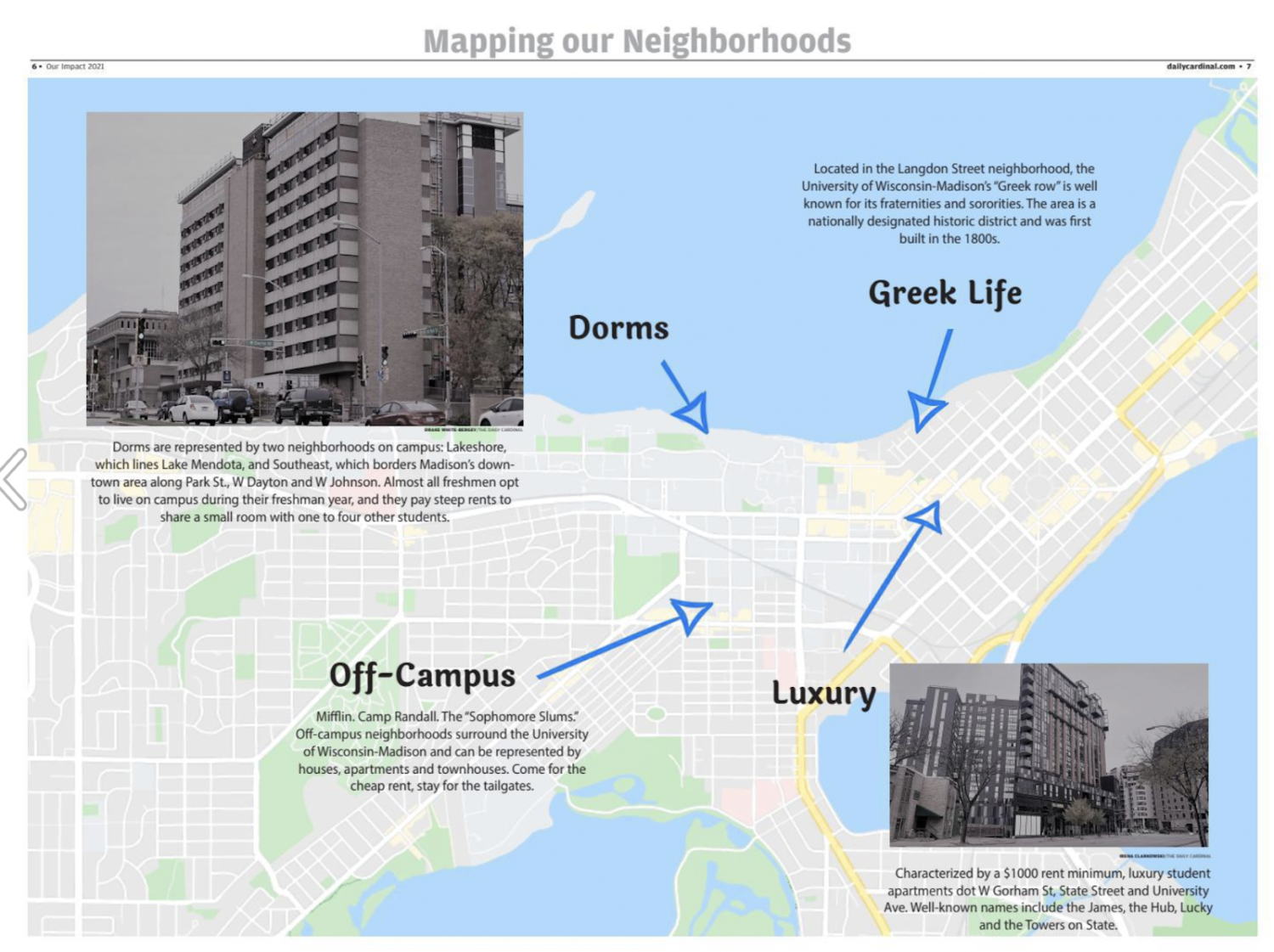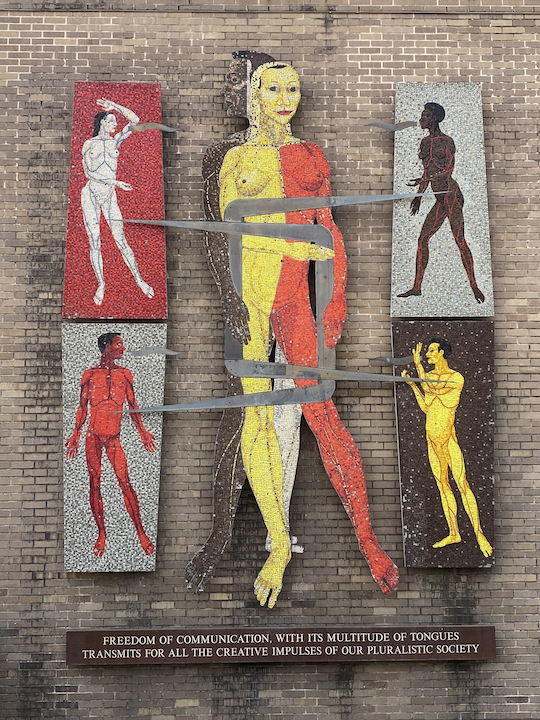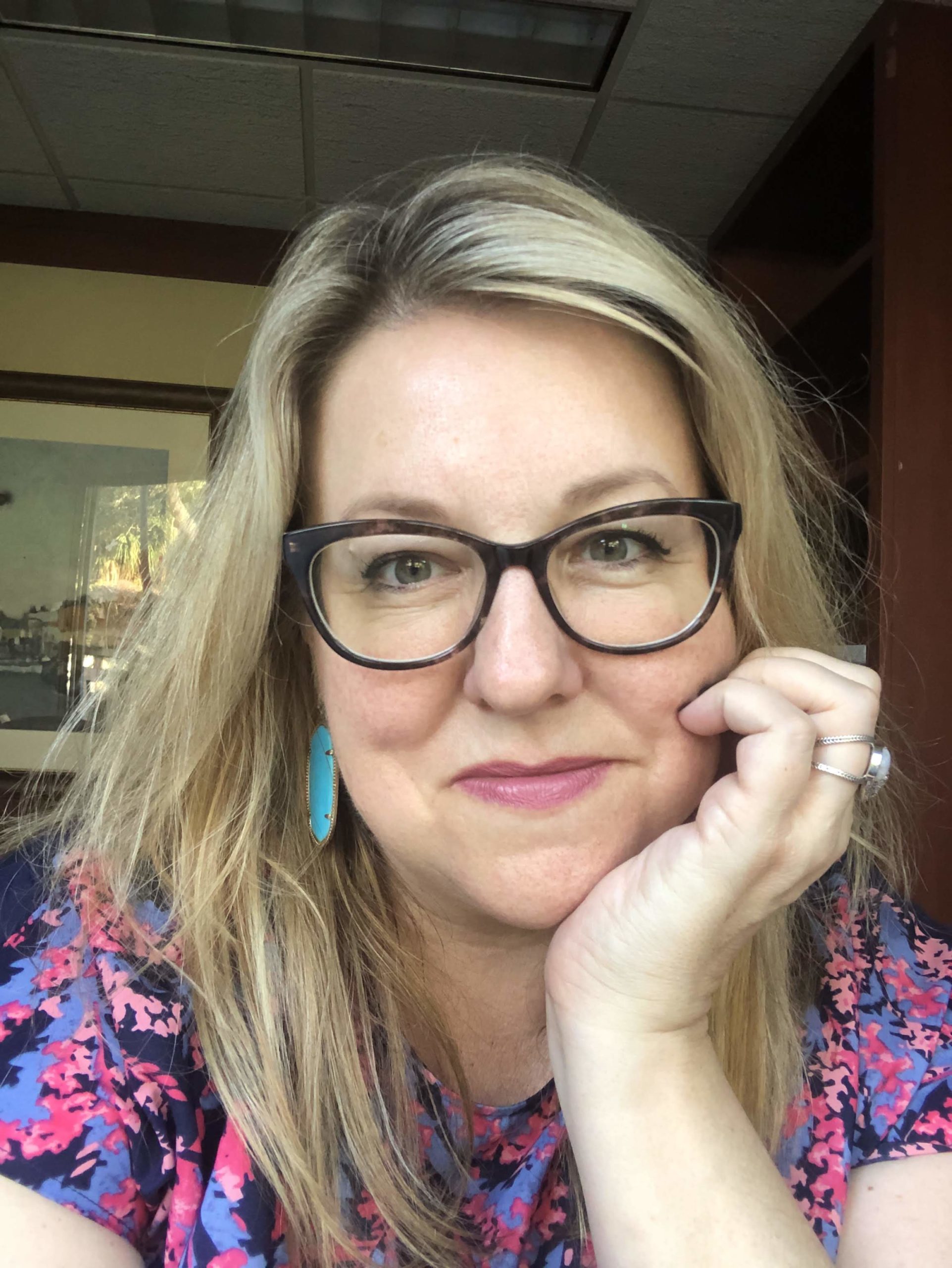Students on every campus make choices about where they live during their college years that impact their academic, social and work lives.
But how do their choices impact the city long-term?
That’s what students at The Daily Cardinal set out to explore when they conceived “Our Impact: The Student Living Issue.”

A screenshot from The Daily Cardinal’s project.
I went to the University of Wisconsin-Madison in September to train about a dozen students, and have worked with them weekly since to see their project through. Their project culminated Dec. 6 in an online presentation that showcased their work to their colleagues, department personnel and Poynter leadership.
Student journalists in the Poynter College Media Project were selected through an application process in the spring of 2021 that asked them to propose an investigation that centered on a problem or issue facing their campus. Dozens of student media outlets applied, and seven were selected for the program, which provided custom project planning, ongoing support from Poynter personnel and a slate of high-profile speakers. They included four-time Pulitzer winner David Barstow, Atlantic staff writer Ed Yong and Sara Ganim, who broke the Jerry Sandusky story as a young reporter.
The project was supported by a grant from the Charles Koch Foundation.
Editor-in-chief Addison Lathers knew she wanted to work with Poynter to execute one of the newspaper’s semesterly “impact projects,” which previously included work on women’s issues, politics and protests, and people with disabilities. These issues typically end up being 10-30 stories long and culminate in a printed special issue, so the partnership with Poynter was an easy and natural fit into the Cardinal’s usual workflow.
“We knew that we wanted to do something special this year, but we’ve always done it kind of this certain way and we figured Poynter would be a great way to kind of branch out and look at things a little differently,” Lathers said during the project webinar, where she said I urged her team to go beyond the concept of gentrification. “Instead of taking a bird’s eye view and working on 30 individual stories, try to hone that in a little bit.”

The art that adorns the exterior of the communications building at UW Madison. (Photo by Barbara Allen)
She said that’s how the team arrived at considering how the student populations impacted the infrastructure of Madison long after they were gone.
The result was a choose-your-own-adventure style website where students could read about the impact their choices in housing made — living in dorms, choosing Greek housing, commuting from off-campus or renting so-called luxury apartments.
The project included a print special section, segments on local radio, and a website that allowed students to choose their own housing adventure.
“Collaboration was key and remotely working on several projects was really difficult,” Lathers said, addressing some of the obstacles the group faced. “Another challenge was remembering that our end goal was a cohesive project. We were very used to, from our previous action projects, to each getting this pitch and working on it really individually.”
Lathers said that community discourse around their project was overwhelmingly positive
“We had a lot of people that were excited about the fact that we were willing to look into this issue of (student) lives and how we spend our money and how we live — how that impacts the surrounding community,” Lathers said. “People were also curious and they wanted to help. We had a lot of students who were very interested in being interviewed for this project, people that have worked in local government were interested in this project — they all were interested in talking to us.”
She also said that historians were incredibly helpful, and become one of the most valuable resources in the project, something Lathers said she hopes future students remember.
The project involved writers from nearly every section of the newspaper, as well as members of its dedicated multimedia staff. News editors Gina Musso, Sam Henschel, Jackson Mozena, Ellie Nowakowski, Sophia Vento and Annabella Rosciglione published 14 stories from all angles, all of which were copy edited by Olivia Everett. Podcast editor Hope Karnopp edited and worked on audio stories featured in the project, and broadcasted updates on The Daily Cardinal’s progress and interviews with staff members on Madison’s community radio station, WORT FM. The printed issue’s cover was designed digitally by graphics editor Jessie Levy.
Lathers’ main advice for other student editors? “If you know multimedia is your thing, definitely be prepared to do a multimedia piece and plan it in advance.”







